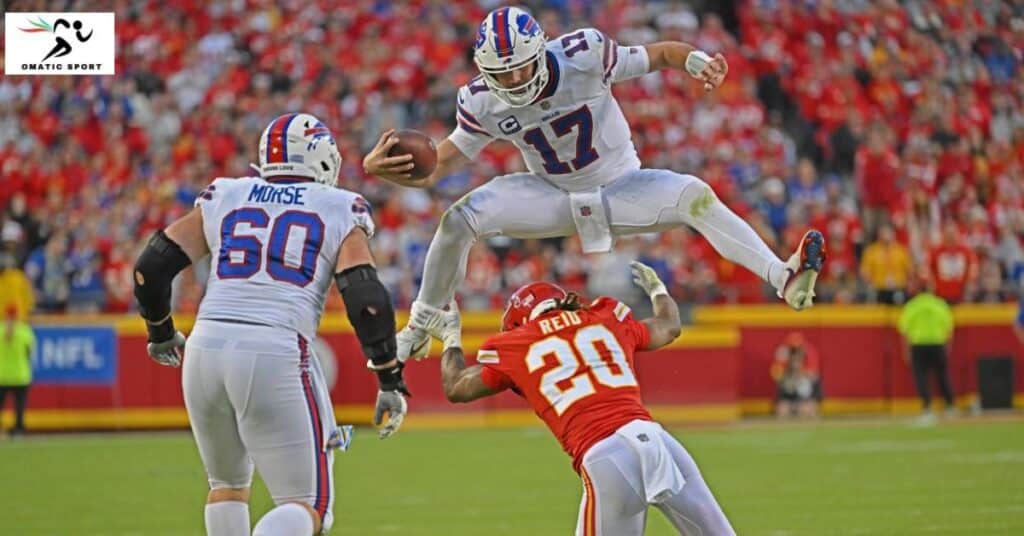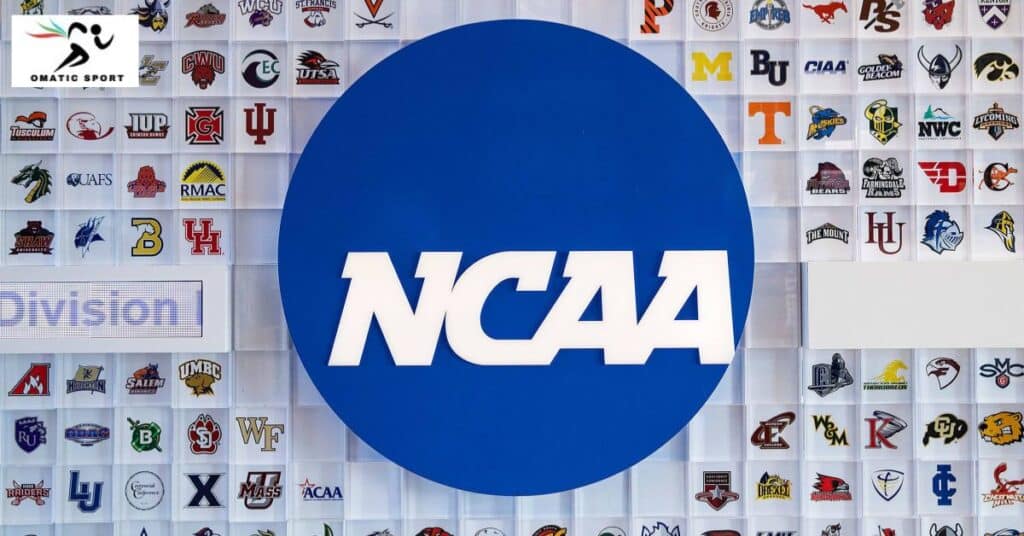
In the world of college athletics, few terms carry as much weight as “D1”. But what does D1 mean in sports, and why does it matter? This comprehensive guide will unpack the complexities of NCAA divisions, with a special focus on Division 1 (D1) and its significance in college sports.
Decoding D1 in Sports
D1, short for Division 1, represents the pinnacle of NCAA divisions. It’s the highest level of intercollegiate athletics sanctioned by the National Collegiate Athletic Association (NCAA) in the United States. But to truly understand D1, we need to look at the bigger picture of college athletics.
Quick definition: D1 as the top tier
D1 is characterized by:
- Larger student bodies
- Bigger budgets
- More extensive athletic programs
- Higher level of athletic competition
Why D1 matters in the sports world
D1 sports are often seen as the gateway to professional athletics. They attract top talent, significant media attention, and substantial financial investments. For many athletes, competing at the D1 level is a dream come true and a potential stepping stone to a professional career.
The NCAA Division System

The NCAA division system isn’t just a random categorization. It’s a carefully structured system designed to create fair competition and appropriate academic and athletic balance.
Brief history: How divisions came to be
- 1906: NCAA founded
- 1973: Three-division structure adopted
- 1978: Division I split for football (I-A and I-AA, now FBS and FCS)
The three-tiered structure: D1, D2, D3 at a glance
| Division | Number of Schools | Focus | Scholarships |
| D1 | 350+ | Highest level of athletic competition | Full athletic scholarships available |
| D2 | 300+ | Balance between academics and athletics | Partial athletic scholarships available |
| D3 | 400+ | Academics first, athletics second | No athletic scholarships |
The Pinnacle of College Athletics
Division 1 represents the cream of the crop in college sports. Lethttps://grammarporch.com/‘s delve into what makes D1 unique.
How many schools make the cut?
As of 2024, there are approximately 350 Division 1 schools in the United States. These institutions range from large public universities to smaller private colleges, all united by their commitment to high-level athletic competition.
Which games are in play?
D1 schools must sponsor at least:
- 7 sports for men and 7 for women, OR
- 6 sports for men and 8 for women
Popular D1 sports include:
- Basketball
- Football
- Baseball
- Soccer
- Track and Field
The financial factor: Big budgets and high stakes
D1 athletics often involve significant financial investments. For example:
- The average D1 football program budget: $16 million
- Top D1 basketball programs can generate over $20 million in revenue annually
D1 Athletes: A Cut Above
D1 D2 D3 comparisons often highlight the exceptional nature of D1 athletes. Here’s why:
Skill level: What sets D1 players apart?
D1 athletes typically:
- Rank in the top 1% of high school athletes
- Have years of specialized training
- Possess exceptional physical attributes for their sport
Time commitment: The life of a D1 athlete
A typical week for a D1 athlete might include:
- 20+ hours of practice and competition
- Additional time for weight training and conditioning
- Travel for away games
- Mandatory study halls
Pro potential: D1 as a launching pad to the big leagues
Many professional athletes come from D1 programs. For instance:
- 6.2% of D1 men’s basketball players go on to play professionally
- 1.6% of D1 football players make it to the NFL
“Division 1 athletics prepared me for the rigors of professional sports in ways I couldn’t have imagined.” – Anonymous NBA player
The Scholarship Game in D1
Athletic scholarships are a major draw for D1 sports, but the reality is more complex than many realize.
Full-ride myths and realities
- Only six D1 sports offer full-ride scholarships: football, men’s and women’s basketball, women’s gymnastics, women’s tennis, and women’s volleyball
- Other sports often divide scholarships among multiple athletes
Sport-specific differences: Revenue vs. non-revenue sports
- Revenue sports (like football and basketball) often have more full scholarships available
- Non-revenue sports may offer partial scholarships or a limited number of full rides
Academic requirements: Balancing books and balls
To maintain NCAA eligibility, D1 athletes must:
- Complete 40% of degree requirements by end of second year
- Maintain a minimum GPA (often 2.3 or higher)
- Complete 9 credit hours each semester to remain eligible
D1 Subdivisions: Not All D1 is Created Equal
Even within D1, there are important distinctions to understand.
FBS vs. FCS in football: What’s the difference?
- FBS (Football Bowl Subdivision):
- 130 schools
- Can offer up to 85 full scholarships for football
- Compete in bowl games
- FCS (Football Championship Subdivision):
- 125 schools
- Can offer up to 63 full scholarships for football
- Compete in a playoff system
Basketball’s unique structure
- 32 D1 conferences
- Automatic bids to NCAA tournament for conference champions
- At-large bids based on season performance
The D1 Experience Beyond the Field
Being a D1 athlete involves more than just playing sports.
Media exposure and public scrutiny
- Regular television coverage for major sports
- Social media presence and management
- Dealing with fan expectations and criticism
Facilities and resources: Top-notch perks
Many D1 schools offer:
- State-of-the-art training facilities
- Dedicated academic support centers
- Professional-quality stadiums and arenas
Academic support: Keeping up in the classroom
D1 schools typically provide:
- Tutoring services
- Academic advisors familiar with NCAA rules
- Priority registration to accommodate practice schedules
D1 vs. D2 and D3: A Comparative Look
Understanding the differences between D1 D2 D3 is crucial for aspiring college athletes.
Competition level: How wide is the gap?
- D1: Highest level of competition, often with nationally ranked teams
- D2: Strong competition, but generally not as intense as D1
- D3: Competitive, but with a greater focus on the overall college experience
Scholarship opportunities across divisions
| Division | Scholarship Availability |
| D1 | Full athletic scholarships available in many sports |
| D2 | Partial athletic scholarships common |
| D3 | No athletic scholarships, but academic scholarships available |
Life balance: Academics and athletics in each tier
- D1: High demands on time, often feels like a full-time job
- D2: More balanced approach, but still significant time commitment
- D3: Greater flexibility, easier to pursue other interests
Choosing Your Path: Is D1 Right for You?
Deciding between D1 D2 D3 is a personal choice that depends on various factors.
Self-assessment: Skill, commitment, and goals
Consider:
- Your athletic ability compared to D1 standards
- Your academic goals and preferred college size
- Your desired balance between sports and other activities
Pros and cons of D1 athletics
Pros:
- Highest level of competition
- Potential for professional career
- Top-notch facilities and support
Cons:
- Intense time commitment
- High pressure to perform
- Less flexibility for other activities
Alternative routes: D2, D3, and beyond
- D2: Balance of high-level competition and academics
- D3: Focus on academics with competitive athletics
- NAIA: Smaller schools with athletic scholarships
- Junior colleges: Opportunity to develop before transferring
The Future of D1 Sports
The landscape of D1 athletics is constantly evolving.
Emerging trends: NIL deals and transfer portals
- Name, Image, and Likeness (NIL) deals allow athletes to profit from their personal brand
- Transfer portals have increased athlete mobility between schools
Challenges facing D1 programs
- Rising costs of athletic programs
- Maintaining academic integrity
- Addressing mental health concerns of student-athletes
What aspiring athletes should watch for
- Changes in NCAA rules and regulations
- Developments in gender equity in sports
- Evolving landscape of college conference realignments
Conclusion
D1 athletics represent the highest echelon of college sports, offering unparalleled opportunities for competition, exposure, and athletic development. However, it’s not the right path for everyone. Understanding the nuances of NCAA divisions, including the demands and benefits of D1, is crucial for any aspiring college athlete.
Whether you’re aiming for D1 glory or considering other divisions, remember that each level offers unique opportunities for growth, both as an athlete and as a student. The key is finding the right fit for your individual goals and abilities.
As the world of college athletics continues to evolve, one thing remains constant: the passion and dedication of student-athletes across all divisions. Whether it’s D1, D2, or D3, college sports continue to play a vital role in shaping the lives of young athletes and the culture of American higher education.

Roman Moris is a skilled writer with expertise in team names and game names. As a member of the Techy Lous team, he blends creativity with a deep understanding of technology, delivering engaging content on the latest innovations in gadgets, AI, and tech trends.

